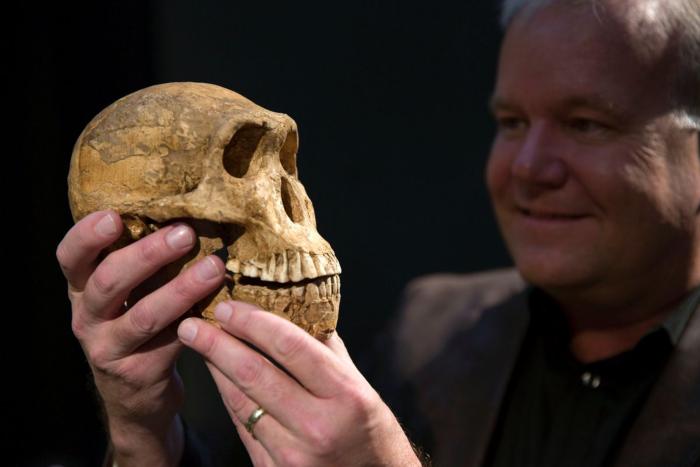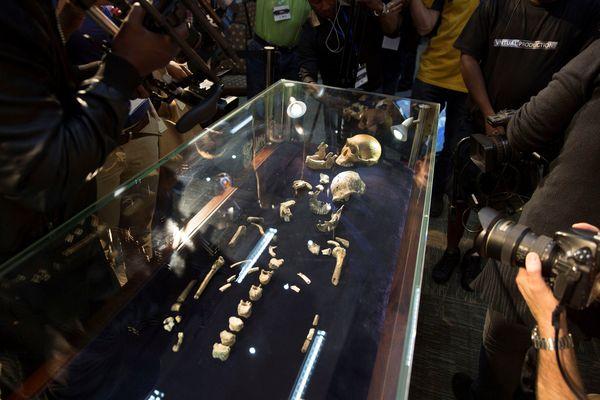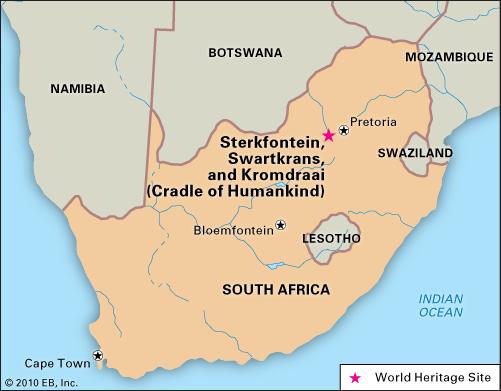 |
Canku Ota
|
 |
|
(Many Paths)
|
||
|
An Online Newsletter
Celebrating Native America
|
||
|
June 2017 - Volume 15
Number 6
|
||
|
|
||
|
This Tiny, Human-like
Species Coexisted With Early Humans 300,000 Years Ago
|
||
|
by Ed Stoddard - Reuters
|
||
KROMDRAAI, South Africa – Scientists unveiled the first evidence on Tuesday that early humans co-existed in Africa 300,000 years ago with a small-brained human-like species thought to already be extinct on the continent at that time. The findings, published in three papers in the journal "eLife," raise fresh questions about human evolution, including the prospect that behaviors previously attributed to humans may have been developed by hominin precursors of Homo sapiens. Hominins are an extinct group of the same genus as humans, the only surviving members of that category today. Man's nearest living relatives, chimpanzees and gorillas, are further removed from Homo sapiens biologically than hominins are. The species in question is Homo naledi, named in 2015 after a rich cache of its fossils was unearthed near Sterkfontein and Swartkrans in South Africa. These treasure troves, 30 miles northwest of Johannesburg, have yielded pieces of the puzzle of human evolution for decades. Scientists initially thought Homo naledi's anatomy suggested the fossils might be as much as 2.5 million years old and were startled by evidence that suggested the species may have buried its dead, a trait long believed to be uniquely human. But dating of the sediments in which the fossils were found and teeth of the specimens showed that the species was roaming the African bush between 236,000 and 335,000 years ago, around the time that modern humans were emerging. "No one thought that a small-brained, primitive hominin could extend down through time this long and that period is exactly the moment when we thought modern humans were arising here in Africa," said Lee Berger, project leader for Johannesburg's University of the Witwatersrand.
Berger said the dating may force scientists to rethink their understanding of the emergence at that time of new technologies such as ochre production and bead work for adornments. There is archeological evidence from that period but little in the way of fossils to suggest who exactly made such things. "Now that we know that modern humans or at least the earliest forms of them were not alone during this expansion of the tool kit, it makes us now have to get better and better evidence to say who made what," Berger told Reuters. The question of when Homo naledi went extinct, and why, remains unanswered, Berger said. Those pre-humans could have survived until 200,000 years ago or even more recently as the fossils uncovered so far do not indicate "an extinction event." Homo sapiens may have been the culprit. Some scientists believe early modern humans drove other hominin relatives – for example, Neanderthals in Europe – to extinction elsewhere. "All we know is that Homo naledi is extinct today. Could Homo sapiens have driven them extinct? Yes," Berger said. |
||||
|
|
|
||
|
|
||
| Canku Ota is a free Newsletter celebrating Native America, its traditions and accomplishments . We do not provide subscriber or visitor names to anyone. Some articles presented in Canku Ota may contain copyright material. We have received appropriate permissions for republishing any articles. Material appearing here is distributed without profit or monetary gain to those who have expressed an interest. This is in accordance with Title 17 U.S.C. Section 107. | ||
|
Canku Ota is a copyright ©
2000 - 2017 of Vicki Williams Barry and Paul Barry.
|
||
 |
 |
|
|
The "Canku
Ota - A Newsletter Celebrating Native America" web site and
its design is the
|
||
|
Copyright ©
1999 - 2017 of Paul C. Barry.
|
||
|
All Rights Reserved.
|
||


